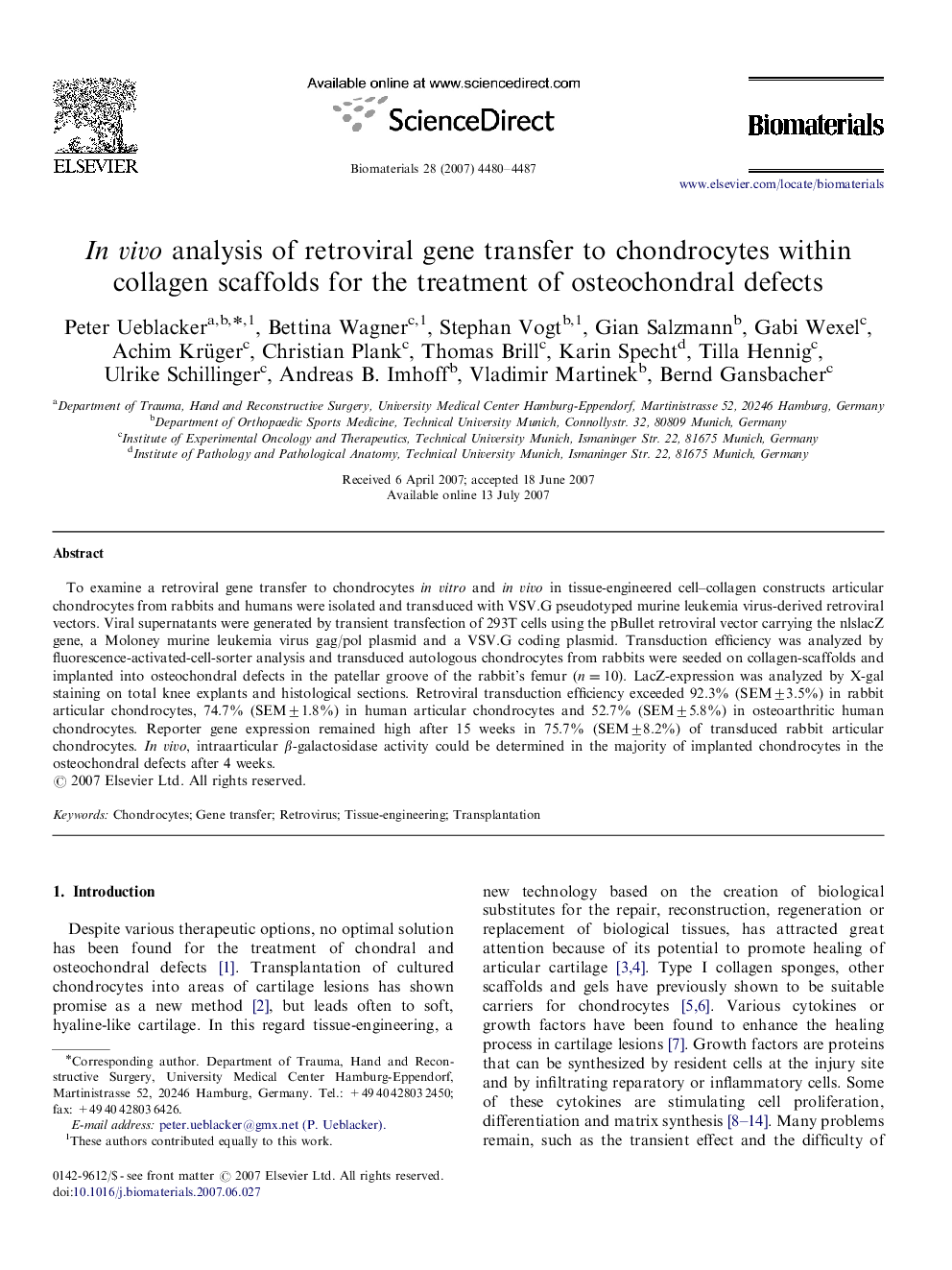| Article ID | Journal | Published Year | Pages | File Type |
|---|---|---|---|---|
| 10750 | Biomaterials | 2007 | 8 Pages |
To examine a retroviral gene transfer to chondrocytes in vitro and in vivo in tissue-engineered cell–collagen constructs articular chondrocytes from rabbits and humans were isolated and transduced with VSV.G pseudotyped murine leukemia virus-derived retroviral vectors. Viral supernatants were generated by transient transfection of 293T cells using the pBullet retroviral vector carrying the nlslacZ gene, a Moloney murine leukemia virus gag/pol plasmid and a VSV.G coding plasmid. Transduction efficiency was analyzed by fluorescence-activated-cell-sorter analysis and transduced autologous chondrocytes from rabbits were seeded on collagen-scaffolds and implanted into osteochondral defects in the patellar groove of the rabbit's femur (n=10). LacZ-expression was analyzed by X-gal staining on total knee explants and histological sections. Retroviral transduction efficiency exceeded 92.3% (SEM±3.5%) in rabbit articular chondrocytes, 74.7% (SEM±1.8%) in human articular chondrocytes and 52.7% (SEM±5.8%) in osteoarthritic human chondrocytes. Reporter gene expression remained high after 15 weeks in 75.7% (SEM±8.2%) of transduced rabbit articular chondrocytes. In vivo, intraarticular β-galactosidase activity could be determined in the majority of implanted chondrocytes in the osteochondral defects after 4 weeks.
